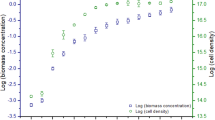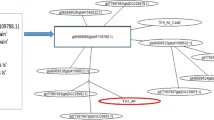Abstract
Rotifer contamination, as a severe constraint in mass cultures, impedes industrial-scale cultivation of microalgae. Once contamination occurred, the rotifers released something that inhibited microalgal cell growth in addition to algal reduction due to predation. With the aim of further identifying the type and effects of the inhibitor released from rotifers, Chlorella sp. was cultured in fresh modified F/2 medium and in media containing various proportions of boiled rotifer culture-medium filtrate (RCF), as well as in media containing water-soluble or lipid-soluble fractions isolated from RCF. Then, the growth and photosynthesis of Chlorella sp. were measured. The rotifer inhibition of Chlorella growth could not be eliminated by boiling the RCF, indicating that the inhibitor was not likely a protein. The growth and photosynthesis of Chlorella sp. was not inhibited by the water-soluble RCF fraction, but they were significantly inhibited by the lipid-soluble RCF fraction, in a dose-dependent manner. Further, the lipid-soluble fraction decreased energy conservation and photosynthetic electron transport, which induced a severe decrease in PSII activity and a decrease in the net photosynthetic O2 evolution rate. Based on these physiological responses of Chlorella cells, the lipid-soluble fraction rather than the protein or water-soluble fractions was determined to contain the responsible inhibitor, suggesting the direction of further studies.






Similar content being viewed by others
References
Baker NR (1991) A possible role for photosystem II in environmental perturbations of photosynthesis. Physiol Plantarum 81:563–570
Berry JA, Björkman O (1980) Photosynthetic response and adaptation to temperature in higher plants. Annu Rev Plant Physiol 31:491–543
Borowitzka MA (2016) Chemically-mediated interactions in microalgae. In: Borowitzka MA, Beardall J, Raven JA (eds) The physiology of microalgae. Springer, Dordrecht, pp 321–357
Bosma R, Miazek K, Willemsen SM, Vermuë MH, Wijffels RH (2008) Growth inhibition of Monodus subterraneus by free fatty acids. Biotechnol Bioeng 101:1108–1114
Cosgrove J, Borowitzka MA (2011) Chlorophyll fluorescence terminology: an introduction. In: Suggett DJ, Prásil O, Borowitzka MA (eds) Chlorophyll a fluorescence in aquatic sciences: methods and applications. Springer, Dordrecht, pp 1–17
Day JG, Slocombe SP, Stanley MS (2012) Overcoming biological constraints to enable the exploitation of microalgae for biofuels. Bioresour Technol 109:245–251
Deruyck B, Nguyen KHT, Decaestecker E, Muylaert K (2019) Modeling the impact of rotifer contamination on microalgal production in open pond, photobioreactor and thin layer cultivation systems. Algal Res 38:101398
Dellagreca M, Zarrelli A, Fergola P, Cerasuolo M, Pollio A, Pinto G (2010) Fatty acids released by Chlorella vulgaris and their role in interference with Pseudokirchneriella subcapitata: experiments and modelling. J Chem Ecol 36:339–349
Fischer BB, Rofflfler S, Eggen RIL (2012) Multiple stressor effects of predation by rotifers and herbicide pollution on different Chlamydomonas strains and potential impacts on population dynamics. Environ. Toxicol. Chem 31:2832–2840
Huang Y, Liu JG, Yu WH, Gao GZ (2014a) Treatment potential of a synergistic botanical pesticide combination for rotifer extermination during outdoor mass cultivation of S. platensis. Algal Res 6:139–144
Huang Y, Liu JG, Li L, Pang T, Zhang LT (2014b) Efficacy of binary combinations of botanical pesticides for rotifer elimination in microalgal cultivation. Bioresour Technol 154:67–73
Hessen DO, Van Donk E (1993) Morphological changes in Scenedesmus induced by substances released from Daphnia. Arch Hydrobiol 127:129–140
Ilavarasi A, Mubarakali D, Praveenkumar R (2011) Optimization of various growth media to freshwater microalgae for biomass production. Biotechnology 10:540–545
Ianora A, Bentley MG, Caldwell GS, Casotti R, Cembella AD (2011) The relevance of marine chemical ecology to plankton and ecosystem function: an emerging field. Mar Drugs 9:1625–1648
Ikawa M, Sasner JJ, Haney JF (1997) Inhibition of Chlorella growth by degradation and related products of linoleic and linolenic acids and the possible significance of polyunsaturated fatty acids in phytoplankton ecology. Hydrobiologia 356:143–148
Ikawa M, Hartshorne T, Caron L-A, Iannitelli R, Barbero L, Wegener K (1984) Inhibition of growth of the green alga Chlorella pyrenoidosa by unsaturated fatty acids. JAOCS 61:1877–1878
Jang MH, Jung JM, Takamura N (2007) Changes in microcystin production in cyanobacteria exposed to zooplankton at different population densities and infochemical concentrations. Limnol Oceanogr 52:1454–1466
Jakobsen HH, Tang KW (2002) Effects of protozoan grazing on colony formation in Phaeocystis globosa (Prymnesiophyceae) and the potential costs and benefits. Aquat Microb Ecol 27:261–273
Kamaya Y, Kurogi Y, Suzuki K (2003) Acute toxicity of fatty acids to the freshwater green alga Selenastrum capricornutum. Environ Toxicol 18:289–294
Li Y, Horsman M, Wu N, Lan CQ, Dubois-Calero N (2008) Biofuels from microalgae. Biotechnol Prog 24:815–820
Lürling M (2003) Phenotypic plasticity in the green algae Desmodesmus and Scenedesmus with special reference to the induction of defensive morphology. Ann Limnol 39:85–101
McGrattan CJ, Sullivan JD, Ikawa M (1976) Inhibition of Chlorella (Chlorophyceae) growth by fatty acids, using the paper disc method. J Phycol 12:129–131
Napoléon C, Raimbault V, Claquin P (2013) Influence of nutrient stress on the relationships between PAM measurements and carbon incorporation in four phytoplankton species. PLoS One 8:e66423
Pang T, Liu JG, Liu Q, Zhang LT, Lin W (2012) Impacts of glyphosate on photosynthetic behaviors in Kappaphycus alvarezii and Neosiphonia savatieri detected by JIP-test. J Appl Phycol 24:467–473
Rawat I, Kumar RR, Mutanda T, Bux F (2013) Biodiesel from microalgae: a critical evaluation from laboratory to large scale production. Appl Energy 103:444–467
Ribalet F, Berges JA, Ianora A, Casotti R (2007) Growth inhibition of cultured marine phytoplankton by toxic algal-derived polyunsaturated aldehydes. Aquat Toxicol 85:219–227
Strasser BJ, Strasser RJ (1995) Measuring fast fluorescence transients to address environmental questions: the JIP test. In: Mathis P(ed) photosynthesis: from light to biosphere. Kluwer, Dordrecht, pp 977–980
Strasser RJ, Srivatava A, Tsimilli-Michael M (2000) The fluorescence transient as a tool to characterize and screen photosynthetic samples. In: Yunus M, Pathre U, Mohanty P (eds) Probing photosynthesis: mechanism, regulation and adaptation. Taylor and Francis, London, pp 445–483
Strasser RJ, Tsimill-Michael M, Srivastava A (2004) Analysis of the chlorophyll a fluorescence transient. In: Papageorgiou GC, Govindjee (eds) chlorophyll a fluorescence: a signature of photosynthesis. Kluwer, Dordrecht, pp 321–362
Torzillo G, Sacchi A, Materassi R, Richmond A (1991) Effect of temperature on yield and night biomass loss in Spirulina platensis grown outdoors in tubular photobioreactors. J Appl Phycol 3:103–109
Van Donk E, Ianora A, Vos M (2011) Induced defences in marine and freshwater phytoplankton: a review. Hydrobiologia 668:3–19
Van Donk E, Lürling M, Lampert W (1999) Consumer-induced changes in phytoplankton: inducibility, costs, benefits, and the impact on grazers. In: Tollrian R, Harvell CD (eds) The ecology and evolution of inducible defenses. Princeton, Princeton University Press, pp 89–103
Venediktov P, Krivoshejeva A (1983) The mechanisms of fatty-acid inhibition of electron transport in chloroplasts. Planta 159:411–414
Wang H, Zhang W, Chen L, Wang JF, Liu TZ (2013) The contamination and control of biological pollutants in mass cultivation of microalgae. Bioresour Technol 128:745–750
Wolfe GV (2000) The chemical defense ecology of marine unicellular plankton: constraints, mechanisms and impacts. Biol Bull 198:225–244
Wu JT, Chiang YR, Huang WY, Jane WN (2006) Cytotoxic effects of free fatty acids on phytoplankton algae and cyanobacteria. Aquat Toxicol 80:338–345
Xu R, Zhang LT, Liu JG (2019) The natural triterpenoid toosendanin as a potential control agent of the ciliate Stylonychia mytilus in microalgal cultures. J Appl Phycol 31:41–48
Yang Z, Kong FX, Shi XL, Cao HS (2006) Differences in response to rotifer Brachionus urceus culture media filtrate between Scenedesmus obliquus and Microcystis aeruginosa. J Freshw Ecol 21:209–214
Yusuf MA, Kumar D, Rajwanshi R, Strasser RJ, Tsimilli-Michael M, Govindjee SNB (2010) Over expression of γ-tocopherol methyl transferase gene in transgenic Brassica juncea plants alleviates abiotic stress: physiological and chlorophyll a fluorescence measurements. Biochim Biophys Acta 1797:1428–1438
Zhang LT, Zhang ZS, Gao HY, Xue ZC, Yang C, Meng XL, Meng QW (2011) Mitochondrial alternative oxidase pathway protects plants against photoinhibition by alleviating inhibition of the repair of photodamaged PSII through preventing formation of reactive oxygen species in Rumex K-1 leaves. Physiol Plant 143:396–407
Zhang LT, He ML, Liu JG (2014) The enhancement mechanism of hydrogen photoproduction in Chlorella protothecoides under nitrogen limitation and sulfur deprivation. Int J Hydrog Energy 39:8969–8976
Zhang LT, Xu R, Liu JG (2019) Efficacy of botanical pesticide for rotifer extermination during the cultivation of Nannochloropsis oculata probed by chlorophyll a fluorescence transient. Photosynthetica 58:156–162
Zhao SY, Wang Y, Li DJ (2014) Effects of toxic and non-toxic Microcystis aeruginosa in different mixtures with Scenedesmus obliquus on growth of Brachionus calyciflorus. J Freshw Ecol 29:377–386
Zhu XX, Wang J, Chen QW, Chen G, Huang Y, Yang Z (2016) Costs and trade-offs of grazer-induced defenses in Scenedesmus under deficient resource. Sci Rep 6:22594
Zuo S, Wan K, Ma S (2015) Combined effect of predatory zooplankton and allelopathic aquatic macrophytes on algal suppression. Env Technol 36:54–59
Funding
This work was supported by National key research and development program-China (2016YFB0601004), the National Natural Science Foundation of China (U1706209), and the Shandong Provincial Natural Science Foundation, China (ZR2019BC057). We thank Dr. John van der Meer (Pan-American Marine Biotechnology Association) for his assistance with proofreading.
Author information
Authors and Affiliations
Corresponding author
Additional information
Publisher’s note
Springer Nature remains neutral with regard to jurisdictional claims in published maps and institutional affiliations.
Rights and permissions
About this article
Cite this article
Xu, R., Zhang, L. & Liu, J. Rotifers release a lipid-soluble agent that inhibits photosynthetic electron transport in Chlorella sp. J Appl Phycol 33, 57–65 (2021). https://doi.org/10.1007/s10811-020-02065-9
Received:
Revised:
Accepted:
Published:
Issue Date:
DOI: https://doi.org/10.1007/s10811-020-02065-9




